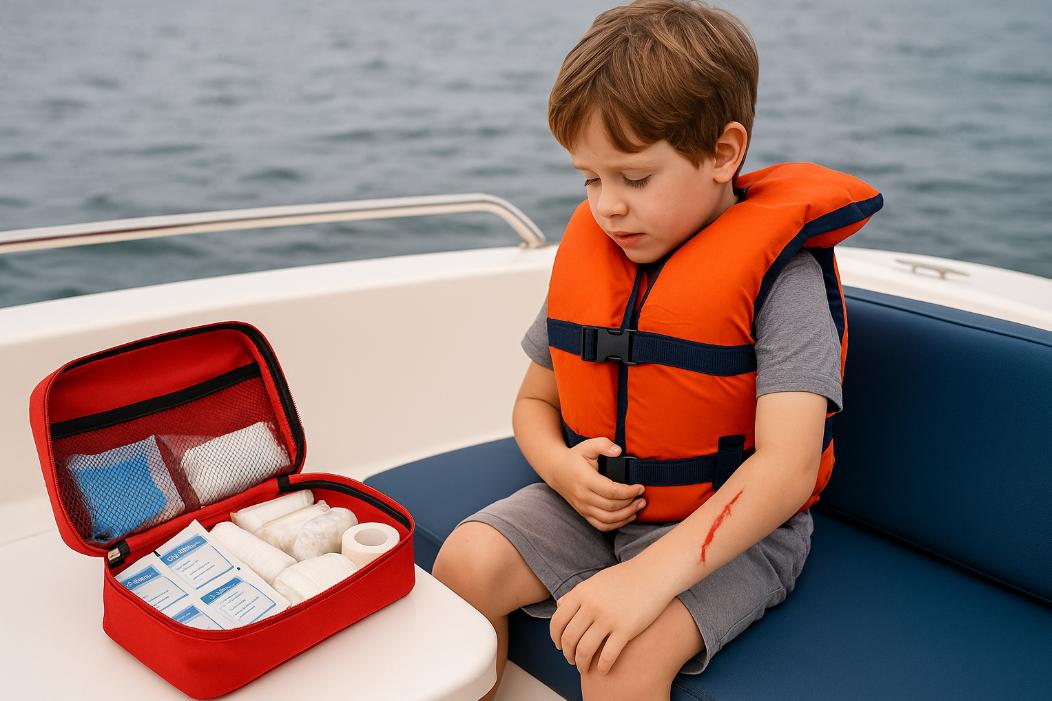Why Every Boat Deserves a Proper First Aid Kit
Before you untie the lines this season, it’s worth taking a few minutes to check what’s often forgotten—your boat’s first aid kit. You might have one stashed away from last year, but when was the last time you opened it?
Out on the water, little mishaps can turn into real problems fast. A minor cut, seasickness, or even sunburn can ruin a good day. Worse, help isn’t exactly around the corner. That’s why having a solid, up-to-date first aid kit on board is a no-brainer.
Most boaters are diligent about checking their engine, fuel, and anchor lines before heading out, but medical preparedness often slips under the radar. Unlike automotive travel, there’s no roadside assistance or quick detour to the nearest pharmacy when you’re floating on a bay or anchored near an island. You’re it—first responder and caregiver rolled into one.
First Aid Supplies Don’t Last Forever
It’s easy to assume that what you packed last season is still good to go—but first aid gear has a shelf life. Bandages dry out. Medications lose potency. That little tube of burn ointment? It might be useless if it’s expired or has been sitting in the heat.
Even if your supplies are technically still in date, repeated exposure to humidity and fluctuating temperatures can compromise them. And if you’ve dipped into your kit once or twice—maybe for a scraped knee or blister—you might not have put everything back.
Regular checkups are key. Make it part of your spring launch checklist: open up the kit, scan for anything questionable, and restock the essentials. It’s a small task that pays off in peace of mind.
You’ll want to double-check things like:
- Antiseptic wipes and creams
- Gauze pads and adhesive bandages
- Seasickness tablets
- Tweezers and scissors
- Emergency contact cards
- Gloves and CPR masks
If you don’t know how old something is, err on the side of replacing it.
One Size Doesn’t Fit All: Match Your Kit to Your Vessel
Different boats require different first aid approaches. What works on a small skiff won’t cut it on a 30-footer with overnight guests.
For Day Boats and Runabouts
Smaller boats with limited storage still need a comprehensive kit, just packed more efficiently. Compact kits designed for emergency use can cover the basics: disinfectants, bandages, gloves, and maybe even some motion sickness meds.
A smart choice is the 72HRS Essential Emergency Kit. It’s designed for quick-grab situations and includes items you’ll appreciate when you need them most—without taking up precious space in a center console or under-seat compartment.
Also consider:
- Waterproof packaging or cases
- Floatable containers
- Emergency flares or whistles bundled in
These extras make the difference when you’re far from shore and need to stay calm under pressure.
For Cruisers and Cabin Boats
If you’re spending the weekend on the water or have the ability to host multiple passengers, your first aid needs increase. You’re not just addressing minor cuts—you may need to deal with allergic reactions, dehydration, heat exhaustion, or even sprains.
Larger boats should be equipped with:
- Burn dressings and aloe gel
- Instant cold packs
- Pain relievers and antihistamines
- A compact manual or guide to first aid
- Splints and compression wraps
The 72HRS kit is still a solid foundation, but it can be easily supplemented with marine-specific gear or medical supplies tailored to your passengers’ needs.
Some cruisers even keep duplicate kits—one inside the cabin and a more basic waterproof version topside.
Where and How You Store It Matters
Even the best first aid kit is useless if you can’t access it when you need it. Store your kit in a dry, visible, and easy-to-reach location—preferably somewhere that doesn’t require unlocking or digging through gear.
Pro tips:
- Keep a waterproof label on the outside
- Let guests and crew know where it’s located
- Use a soft-sided case that won’t slide or rattle
- Mount a second kit near the helm or rear deck if your boat is larger
Also, consider making a checklist and taping it inside the lid. That way, if someone else needs to use the kit in an emergency, they won’t waste time guessing.
Stay Safe, Boat Smart
Boating is supposed to be fun, relaxing, and memorable—in a good way. The best adventures are the ones where everything goes right. But smart captains plan for the moments that don’t.
By keeping a stocked, current, and accessible first aid kit on board, you’re not just ticking off a safety box. You’re actively protecting your family, friends, and crew. You’re also showing respect for the unpredictability of the water.
So before your next outing, take ten minutes. Open your kit. Make a list of what’s missing. Toss what’s old. Replace what you need. Then stash it where you can reach it in a hurry.
Trust me—you’ll feel better knowing it’s there.
Happy boating, and stay safe out there.



Use the share button below if you liked it.